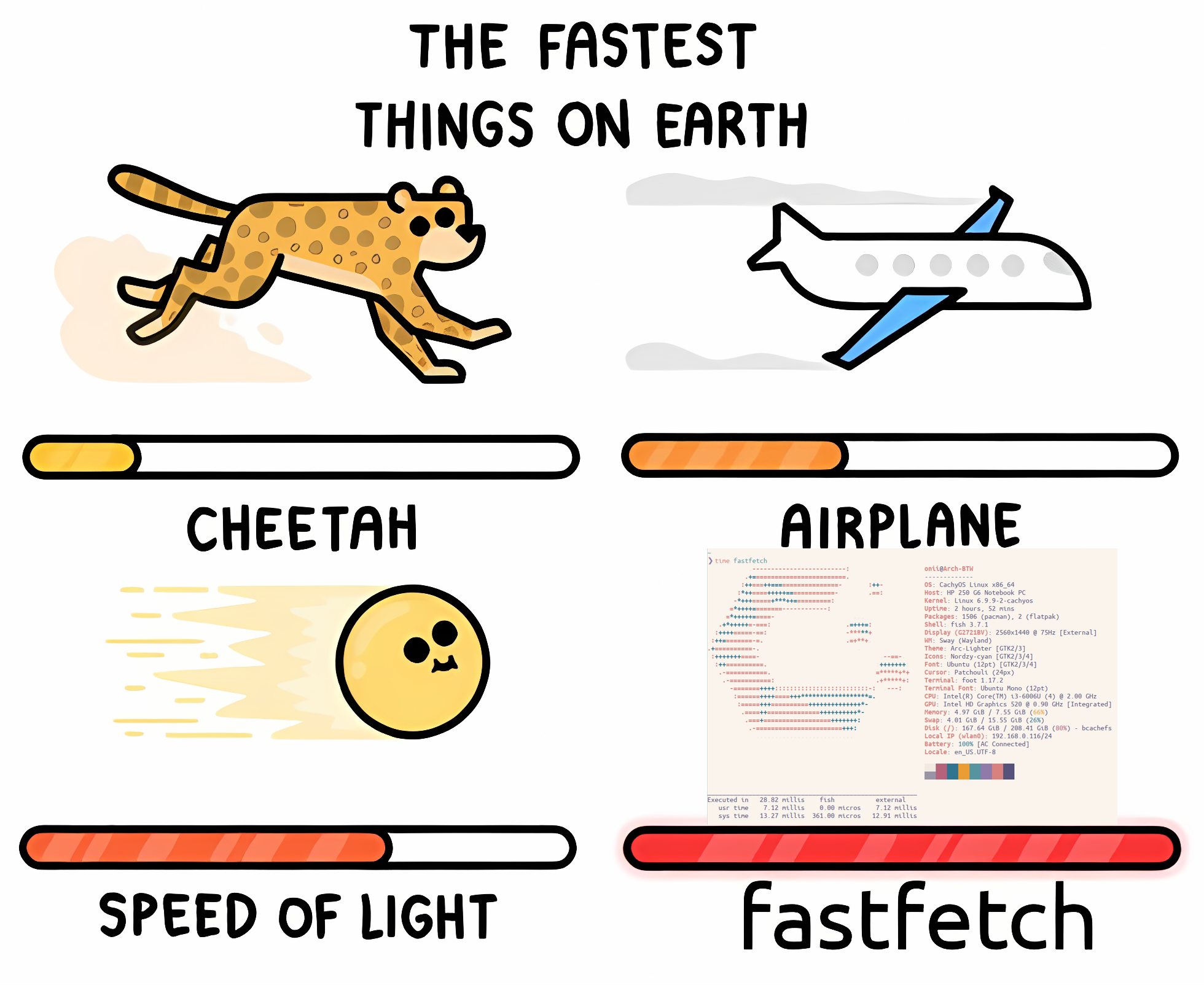this post was submitted on 14 Jul 2024
485 points (96.7% liked)
linuxmemes
21272 readers
423 users here now
Hint: :q!
Sister communities:
- LemmyMemes: Memes
- LemmyShitpost: Anything and everything goes.
- RISA: Star Trek memes and shitposts
Community rules (click to expand)
1. Follow the site-wide rules
- Instance-wide TOS: https://legal.lemmy.world/tos/
- Lemmy code of conduct: https://join-lemmy.org/docs/code_of_conduct.html
2. Be civil
- Understand the difference between a joke and an insult.
- Do not harrass or attack members of the community for any reason.
- Leave remarks of "peasantry" to the PCMR community. If you dislike an OS/service/application, attack the thing you dislike, not the individuals who use it. Some people may not have a choice.
- Bigotry will not be tolerated.
- These rules are somewhat loosened when the subject is a public figure. Still, do not attack their person or incite harrassment.
3. Post Linux-related content
- Including Unix and BSD.
- Non-Linux content is acceptable as long as it makes a reference to Linux. For example, the poorly made mockery of
sudoin Windows. - No porn. Even if you watch it on a Linux machine.
4. No recent reposts
- Everybody uses Arch btw, can't quit Vim, and wants to interject for a moment. You can stop now.
Please report posts and comments that break these rules!
founded 1 year ago
MODERATORS
you are viewing a single comment's thread
view the rest of the comments
view the rest of the comments

Yep. I used to code a lot in JVM languages, then started learning Rust. My initial reaction was "Why the hell does Rust have two string types?".
Then I learned that it's for representing actual memory vs. view and what that meant. Since then I'm thinking "Why the hell do JVM languages not have two string types?".
I'm not a java programmer, but I think the equivalent to str would be char[]. However the ergonomics of rust for str isn't there for char[], so java devs probably use String everywhere.
Nope, crucial difference between Java's
char[]and Rust's&stris that the latter is always a pointer to an existing section of memory. When you create achar[], it allocates a new section of memory (and then you get a pointer to that).One thing that they might be able to do, is to optimize it in the JVM, akin to Rust's
Cow.Basically, you could share the same section of memory between multiple
Stringinstances and only if someone writes to their instance of thatString, then you copy it into new memory and do the modification there.Java doesn't have mutability semantics, which Rust uses for this, but I guess, with object encapsulation, they could manually implement it whenever a potentially modifying method is called...?